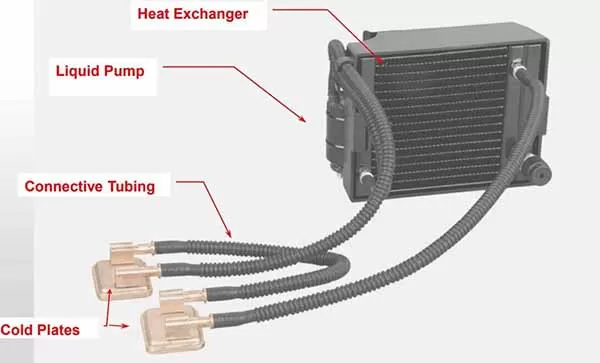
The liquid in a liquid cooling heat sink is usually water cooling, which can be distilled water or a glycol solution.Water coolant has excellent heat dissipation performance and can be forced to circulate under the drive of a pump to take away the heat of the heat sink.In addition, there are other types of liquids that can be used for liquid cooling, such as deionized purified water, mineral oil, and fluorinated fluids.
1. Deionized purified water.
Pure water is a relatively good heat dissipation medium, relatively cheap, environmentally friendly and non-polluting.The disadvantage is that pure water is easily contaminated, and it is difficult to maintain the insulation state after contamination. It can only be used in some non-direct contact liquid cooling technologies. Once leakage occurs during power-on operation, it will cause fatal damage to the cooling equipment.
2. Mineral oil.
Often be seen in many mechanical equipment. Although mineral oil is cheap and insulating, it has high viscosity and is easy to decompose. It also has the risk of burning under certain conditions.
3. Fluorinated liquid.
Fluorinated liquid was originally used as a circuit board cleaning liquid. Because of its insulating and non-flammable inert characteristics, it is used in water cooling of data centers, servers, etc. It is currently the most widely used liquid immersion cooling. fluid, but the price is the most expensive among the three coolants.
Liquid cooling systems transfer heat up to four times better than an equal mass of air. This allows higher performan cecooling to be provided with a smaller system. For liquid cold plates, the choice of working fluid is as important as choosing the hardware pieces. The wrong liquid can lead to poor heat transfer, clogging, and even system failure. A proper heat transfer fluid should provide compatibility with system’s metals, high thermal conductivity and specific heat, low viscosity, low freezing point, high flash point, low corrosivity, low toxicity, and thermal stability.Today, despite many refinements in liquid cold plate designs, coolant options have stayed relatively limited. In many cases, regular water will do, but water-with-additives and other types of fluids are available and more appropriate for.


 +86-18902844286
+86-18902844286
 E-mail
E-mail
